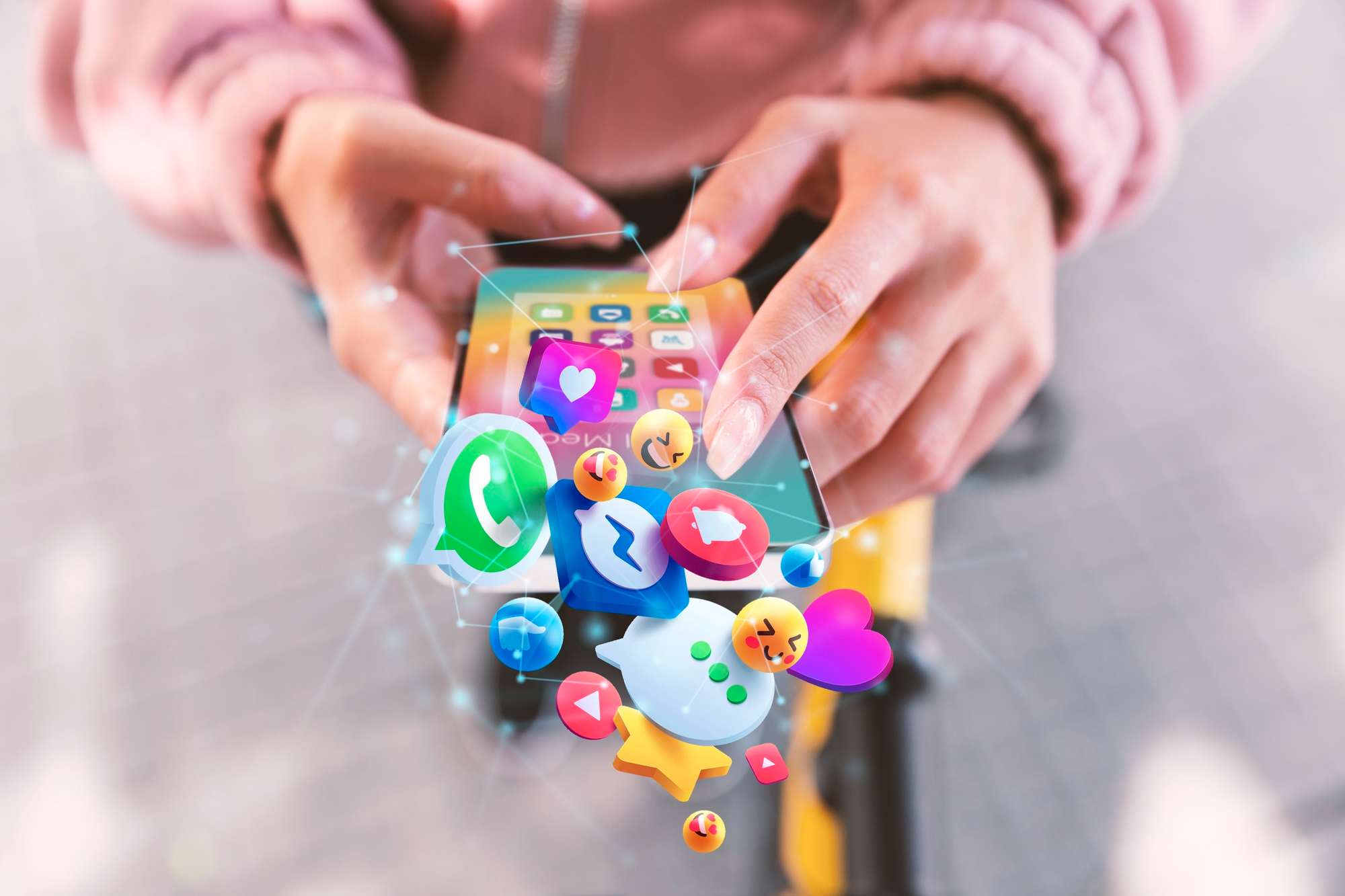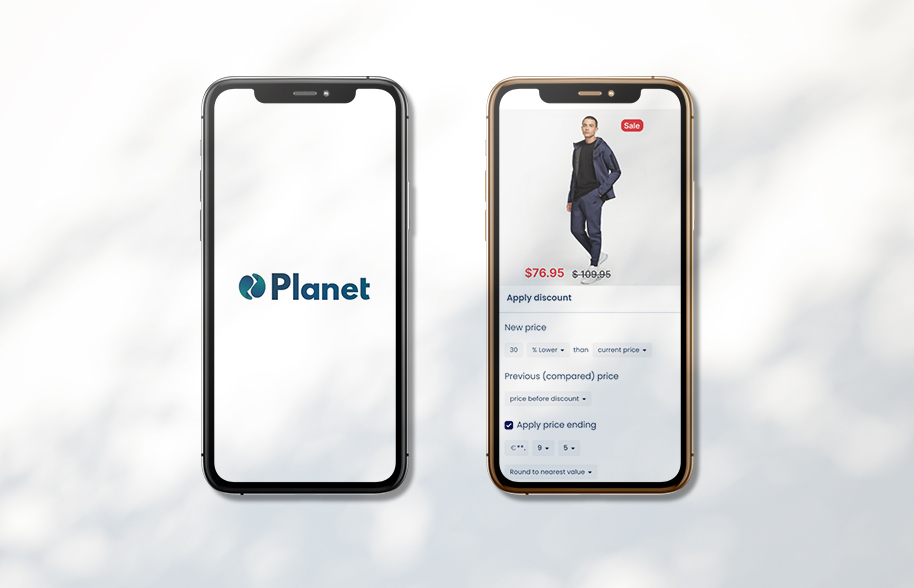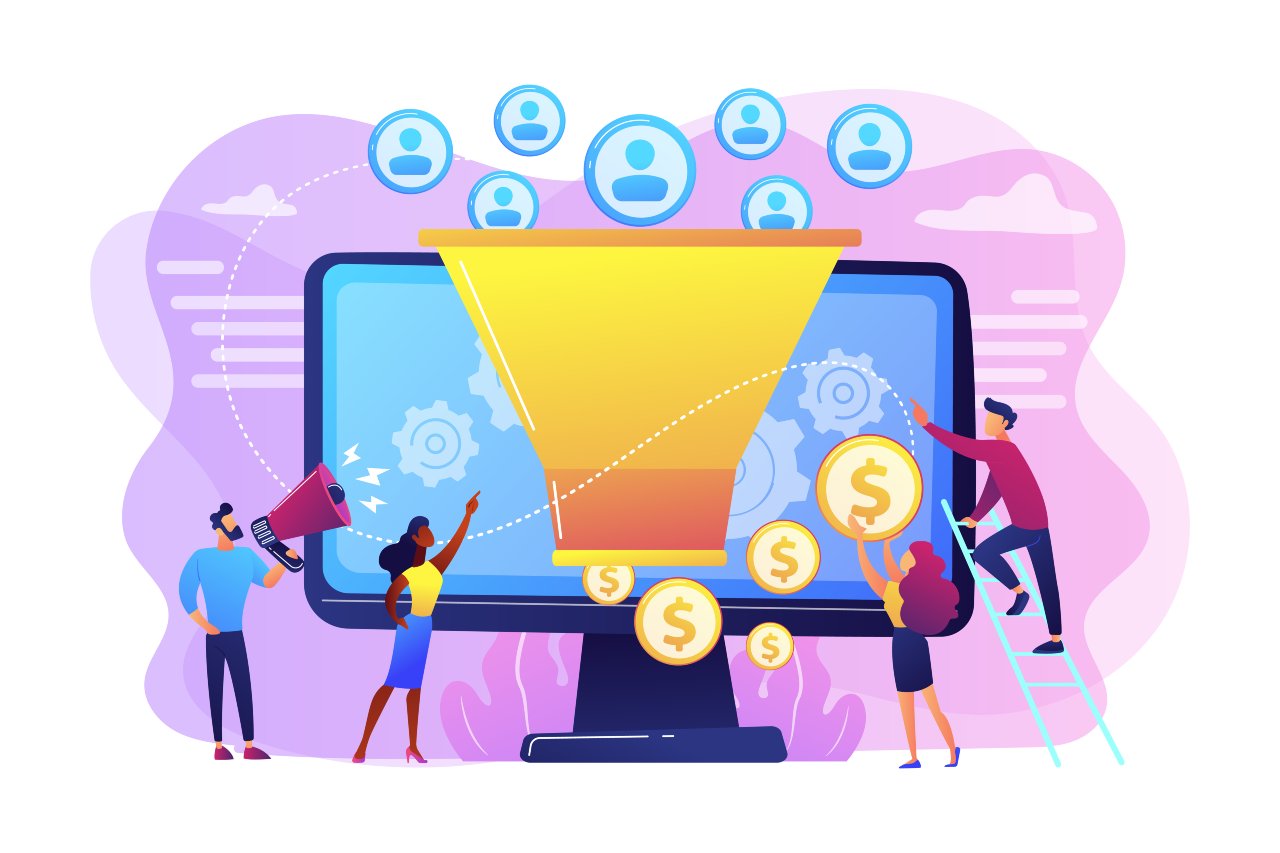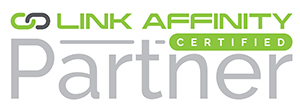I’m sure we’ve all been there! You know, the moment you’re about to dive into the best pile of spaghetti you’ve ever seen. And just as you turn your fork in the pasta and get in the first bite… the phone rings.
“May I speak to…..?” asks the person on the phone. “It’s an important message regarding your oven preferences.”
This frustrating interruption is exactly why we’re here to talk about inbound lead generation. And the question is….
What is inbound lead generation?
It’s a solution that can prevent your company or organization from becoming that annoying and disturbing interlocutor that is ruining spaghetti nights for pasta lovers everywhere.
Let’s start with the definition of a potential customer, and then we will see what the online lead generation is,why lead generation is needed, how to qualify someone as a lead, how to generate leads and why inbound lead generation is much more effective than simply buying leads.
What is a potential customer?
A potential customer is a person who has expressed interest in your company’s product or service in some way. As a potential customer, you would listen to a company or organization that you have already opened communication with rather than receive a random call from someone who previously purchased contact information.
From a business perspective, the information that any company gathered about you from the survey responses helps customize the opening communication to address existing issues.
What is lead generation?
Lead generation is the process of attracting and converting strangers and prospects into someone who has expressed interest in the company’s product or service. Examples of lead generators include job applications, blog posts, coupons, live events and online content.
Whenever someone outside the marketing world asks what exactly we do, we can’t say “create content for lead generation.” They would be completely lost and we wouldn’t get some really confusing looks. So, instead of saying that, we say “we work to find unique ways to attract people to our business. We want to offer enough to get them naturally interested in the company and thus ultimately interested in the brand.”
This usually resonates better and is exactly what lead generation is: it’s a way to encourage potential customers to your business and get them on the path to the final purchase.
Why do we need lead generation?
When an outsider initiates a relationship with the company by showing an organic interest in the business, the transition from outsider to customer is much more natural. Lead generation is within the second stage of the inbound marketing methodology. That’s after you’ve attracted an audience and are ready to convert those visitors into leads for the sales team (i.e., sales-qualified leads).
Next, as we can see in the diagram, generating leads is a fundamental point in an individual’s journey to becoming a delighted customer.
How do we generate leads?
Now that we understand how lead generation fits into the whole inbound marketing methodology, let’s look at the steps in the lead generation process.
First, a visitor discovers the business through one of the marketing channels, such as the website, blog or a social media page.
The visitor then clicks on the call to action (CTA): an image, a button or a message that encourages visitors to the website to perform some kind of action.
The CTA takes the visitor to a landing page, which is a web page designed to capture information from potential customers in exchange for an offer.
An offer is the content or something of value that is “offered” on the landing page, such as an e-book, course or template. The offer must have sufficient perceived value for a visitor to provide their personal information in exchange for access to it.
The landing page form consists of a series of fields that collect information in exchange for the offer. The forms are usually located on the landing page, although technically they can be embedded anywhere on the page. Once a visitor fills out the form, voila! You already have a new lead!
See how it all fits together?
To sum it up: the visitor clicks on a CTA that takes them to a landing page where they fill out a form to get an offer. This is the moment when you become a candidate.
Customer generation marketing
Once all these elements are gathered, you can use the various promotional channels to drive traffic to the landing page to start generating leads.
But which channels should I use to promote the landing page? Let’s talk about front-end lead generation: lead generation marketing.
There are even more channels that can be used to get visitors to convert into leads. Let’s go deeper into this and talk about some others.
Content
Content is an excellent way to guide users to a landing page. Generally, it creates content to provide visitors with useful and free information. CTAs can be included anywhere in the content: inline, at the bottom of the post, in the side panel… The more delighted the visitor is with the content, the more likely they are to click on the call to action and move to the landing page.
Email is a great place to reach people who already know the brand, product or service. It is much easier to ask them to perform an action, since they have already subscribed to the list. Emails tend to be a bit cluttered, so better to use a CTA that has compelling copy and an eye-catching design to grab subscribers’ attention.
Advertising and retargeting
The sole purpose of an ad is to get people to take an action. Otherwise, why spend the money? If you want people to convert, make sure your landing page and offer match exactly what is promised in the ad, and that the action you want users to take is very clear.
Blog
The great thing about using blog posts to promote an offer is that you can tailor the entire piece to the end goal. So, if the offer is an instructional video on setting up Google Search Console, you can write a blog post on how to select marketing metrics… which would make the CTA highly relevant and clickable.
Social networks
Social media platforms make it easy to guide followers to take action, from the swipe-up option on Instagram stories to Facebook bio links to Bitly URLs on Twitter. You can also promote your offers in your social posts and include a call to action in your title.
Product testing
You can break down many barriers for a window by offering proof of product or service. Once a prospect is using the product, you can entice them with additional offers or resources to encourage them to buy.
Another good practice is to include branding in the free versions so that you can capture other potential customers as well.
Referral marketing
Referral marketing is useful for lead generation in a different way. That is, getting the brand in front of more people, which, in turn, increases the chances of generating more leads.
Regardless of the channel you use to generate leads, you want to guide users to the landing page. As long as the landing page has been created, the rest will handle itself.
Why not buy leads?
Marketers and salespeople want to fill the sales funnel and fill it quickly. Enter: The temptation to buy customers. Buying leads, rather than generating them organically, is much easier and requires much less time and effort, despite being more expensive.
You might be paying for advertising anyway… so why not buy leads? First of all, any potential customer that has been purchased doesn’t really know your company. They usually “sign up” somewhere else when they sign up for something, and they didn’t actually opt in to receive anything from your company.
Therefore, the messages you send them are unwanted messages, and sending unwanted messages is intrusive.
Remember the disturbing call we got when we were trying to eat spaghetti? This is how people feel when they receive emails and other messages from people who did not ask for news.
If the prospect has never been on the web and indicated an interest in the products or services, then you are being disrupted. If they never opted to receive messages specifically from the company, then there is a good chance that they may mark the messages as spam, which is quite dangerous.
Once enough people mark messages as spam, you can go to a “blacklist,” which is then shared with other email providers. And once you get on the blacklist, it’s very difficult to get back on it. In addition, email deliverability and IP reputation will likely suffer. It is always better to generate leads rather than buy them.
How to qualify a potential customer?
As we explained in the first section, a potential customer is a person who has expressed interest in a company’ s product or service. Now let’s talk about the different ways someone can show their interest.
Essentially, a sales lead is generated through information gathering. That collection of information could be the result of a job applicant showing interest in a position by completing an application, a shopper sharing contact information in exchange for a coupon, or a person completing a form to download educational content.
How to measure the level of interest of a potential customer?
Here are just a few of the many ways we could qualify someone as a potential customer. Each of these examples shows that the amount of collected information used to qualify a customer can vary.
Application for employment: A person who completes an application form is willing to share a great deal of personal information because he or she wants to be considered for the position. Completing that application shows your true interest in the job, therefore qualifying the person as a leader for the company’s recruiting team, not the marketing or sales teams.
Coupon: unlike the job application, you are likely to know very little about someone who has found one of your coupons online. But if they find the coupon valuable enough, they may be willing to provide their name and email address in exchange for it. Although it is not a lot of information, it is enough for a company to know that someone is interested in it.
Content: while downloading a coupon shows that a person has a direct interest in the product or service, content (such as an educational e-book or webinar) does not. Therefore, to really understand the nature of the person’s interest in the business, you will probably need to gather more information to determine if the person is interested in the product or service and if it is a good fit.
These three general examples highlight how lead generation differs from company to company and person to person. You will need to collect enough information to assess whether someone has a true and valid interest in the product or service: the amount of information that is sufficient will vary depending on the business.
Customer ratings
Lead scoring is a way of scoring leads quantitatively. Using this technique, leads are assigned a numerical value (or score) to determine where they fall on the scale from “interested” to “ready for a sale”. The criteria for these actions depend entirely on the company, but should be uniform throughout the marketing and sales department so that everyone is working on the same scale.
A lead’s score can be based on the actions they have taken, the information they have provided, their level of engagement with your brand, or other criteria determined by the sales team. For example, you may score someone higher if they regularly engage with you on social media or if their demographic information matches your target audience.
The higher a lead’s score, the closer they are to becoming a sales-qualified customer, and they are just one step away from becoming a customer. Scoring and criteria is something you can tweak along the way until you find the formula that works, but once you do, it will transform lead generation into customer generation.
Customer generation strategies
Online lead generation encompasses a wide range of tactics, campaigns and strategies, depending on the platform on which you want to capture customers.
Next, we are going to tell you some of the lead generation strategies that we use at our
digital marketing agency Barcelona
for some of the most popular platforms.
Customer generation through Facebook
Facebook has been a method for lead generation since its inception. Originally, companies could use outbound links on websites. However, when Facebook Ads was launched in 2007 and its algorithm began to favor accounts using paid advertising, there was a major shift in the way businesses used the platform to engage potential customers.
Facebook created Lead Ads for this purpose. Facebook also has a feature that allows you to place a simple call-to-action button at the top of your Facebook page, which helps send Facebook followers directly to the company’s website.
Customer generation through Twitter
Twitter has lead generation cards, which allow you to generate leads directly within a tweet without having to leave the site. A user’s name, email address and Twitter username are automatically entered into the card, and all they have to do is click “Submit” to become a candidate.
Customer generation through LinkedIn
LinkedIn has been increasing participation in the advertising space since the early days. When it comes to lead generation, LinkedIn created Lead Gen Forms, which automatically get filled in with users’ profile data when they click on an action to call, making it easy to capture information.
Customer generation through PPC
When we say PPC (pay per click), we mean ads on search engine results pages (SERPs ). Google gets 3.5 billion searches a day, which makes it a prime location for any advertising campaign, especially for the lead generation. The effectiveness of the PPC campaign is largely based on an uninterrupted user flow, as well as budget, specific keywords and a few other factors.
Customer generation through B2B
B2B is a particular business model that requires a particular approach to lead generation. SEO is the primary resource for capturing leads, followed closely by email marketing and social media. Not to mention, effectiveness varies by channel.
Tips for generating customers through campaigns
In any lead generation campaign, there can be many moving parts. It can be difficult to know which parts of the campaign are working and which need some fine tuning.
Here are some tips for creating lead generation campaigns.
Use the right customer generation tools
In any lead generation campaign, there can be many moving parts. It can be difficult to know which parts of the campaign are working and which need some fine tuning.
Here are some tips for creating lead generation campaigns.
CTA Templates– 50+ free customizable call-to-action (CTA) templates in PowerPoint that can be used to create clickable CTA buttons on your blog, landing pages and other website sites.
Form scraping tool: A form scraping tool that collects submissions on existing website forms will help you automatically consolidate all your leads into your contact database, regardless of the form submitted by visitors on the website.
Creates incredible offers for all stages of the buying cycle
Not all web visitors are ready to talk to the sales team or see a product demonstration. Early in the buyer’s journey, someone might be interested in an informative piece such as an e-book or guide, while someone who is more familiar with the company and near the end of the journey might be more interested in a free trial or demo version. It is important to make sure that you are creating offers for each phase and that you offer CTAs for these offers throughout the website.
Yes, it takes time to create valuable content that teaches and nurtures potential customers, but if you offer nothing for visitors who are not willing to buy, then they may never come back to the website.
If you want to take personalization a step further, which will help increase the conversion rate, try using smart calls to action. Smart CTAs detect when a person is in the buyer’s journey, whether they are a new visitor, a lead or a customer, and display calls to action accordingly. Personalized CTAs convert 42% more visitors than basic calls to action.
Keeping the message consistent and delivering on the promise
The highest converting lead generation campaigns are those that deliver what they promise and create a seamless transition from ad copy and design to the product itself.
It is important to ensure that you present a consistent message throughout the process and provide value to everyone involved in lead capture. Aspects of the lead generation campaign should mirror everything else on the website, blog and product you will eventually try to sell.
If not, you will have difficulty getting a head start to the next stage of the life cycle. The campaign should be more than just getting an email address, it should be about developing a new customer.
Links the call to action to a dedicated landing page
This may seem obvious, but you’d be surprised how many marketers don’t create dedicated landing pages for their offers. CTAs should send visitors to a landing page where they can receive a specific offer. Do not use calls to action to drive people to the home page, for example.
Even if the CTA is about the brand or product (and maybe not an offer like a download), you still need to send them to a specific landing page that will convert them into a lead.
Involve the sales team
Remember when we talked about customer ratings? Well, it’s not exactly feasible without the sales team’s input.
How will you know what qualifies a candidate for sales without knowing if their defined proposals are successfully sold?
Marketing and sales teams must be aligned with the definitions and process of moving an opportunity from marketing to SQL to opportunity before it even begins to capture leads. In addition, you have to be open to the evolution of your relationship with sales and how it guides prospects through the funnel. Definitions will likely need to be refined over time; it is just important to make sure to keep everyone involved up to date.
Use social networks strategically
While marketers often think of social media as the best for marketing, it can still be a useful and low-cost source of lead generation, as shared in the lead generation strategies above. The key is to use social media strategically to generate them.
It is best to start links directly to landing pages of high-performing offers from Facebook, Twitter, LinkedIn and other social media posts. Tell visitors that you are sending them to a landing page. In this way, you will be setting expectations.
You can also do a blog lead generation analysis to find out which posts generate the most leads, and then make a point of regularly linking social media posts to them.
Another way to generate leads from social networks is to hold a contest. Contests are fun and engaging for your followers, and they can also teach you a lot about your audience. It’s a win-win.
Remain flexible and constantly iterate
The lead generation strategy must be as dynamic as the people we want to target. Trends change, behaviors change, opinions change … so must lead gen marketing. Use A/B split testing to see which CTA works best, which landing pages convert best and which copy captures the target audience.
Experiment with changes in design, layout, content and advertising channels until you find what works best.
Conclusion
The basic principles we have discussed in this blog post are just the beginning. Continue to create great offers, calls to action, landing pages and forms, and promote it in multichannel environments. Remember that it is important to stay in touch with the sales team to ensure that you are delivering high quality leads on a regular basis.
Last but not least, never stop testing. The more you modify and test each step of the inbound lead generation process, the more you will improve the quality of your leads and increase revenue.







